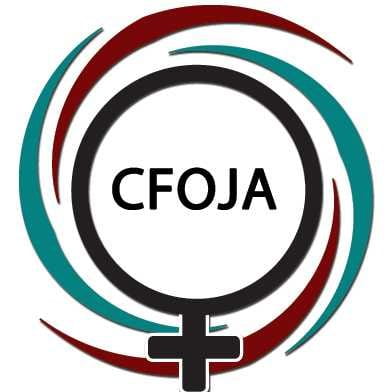Canadian Femicide Observatory for Justice and Accountability

This project has been supported by various funding agencies, including the Canada Research Chair Program, and through two consecutive grants from the Social Sciences and Humanities Research Council.
The goals of the Canadian Femicide Observatory for Justice and Accountability (CFOJA) are multi-faceted with overall goal to document social and state responses to femicide in Canada. [For more information, check out Canadian Femicide Observatory for Justice and Accountability.]
For our purposes, we define femicide as the ‘killing of all women and girls primarily by, but not exclusively, men.’ We do so for two reasons:
1. Given that the CFOJA focuses on femicide using a national lens in Canada, this definition enhances the ability to make provincial/territorial comparisons. This same reasoning is used to support the adoption of a broad definition at the international level.
2. This definition allows for the possibility that femicide may involve female perpetrators in various social and cultural contexts. Our long-term goal, however, is to direct subsequent efforts to develop more specific parameters that can capture the ‘killed because they were women’ elements of narrower definitions of femicide and to identify various subtypes of femicide. Recent funding has been awarded to begin this work.
As part of its research and knowledge mobilization activities on femicide, the CFOJA will:
1. Establish a visible and national focus on social and state responses to femicide in Canada;
2. Count and track cases of femicide as they occur throughout the country while also remembering and honouring these women and girls;
3. Identify legislation, policies and practices in social and state responses to femicide that perpetuate and maintain social structures and gender inequalities that are conducive to, or help facilitate, the perpetration of femicide;
4. Through research, document social and state responses to femicide that may further increase the vulnerability and marginalization of some groups of girls and women due to varying social identities (e.g. indigeneity, race/ethnicity, culture, age, LGBTQ2, religion, disability, poverty, geography and so on);
5. Through research, identify and examine the stereotypes and biases that support the varying social and state responses documented;
6. Facilitate the exchange of information, reliable data, and current knowledge that can advance legislative, policy and program change on issues related to the prevention of femicide in Canada at the local, regional, provincial/territorial, and/or national levels;
7. Monitor emerging issues/trends related to femicide/violence against women generally;
8. Provide user-friendly and reliable information, resources and research on femicide;
9. Act as a knowledge broker for researchers, professionals, policy-makers, media and public.
Related References:
Dawson, M., M. Carrigan, and E. Hill. 2019.Femicide: An Oxford Bibliography. New York: Oxford [In press].
Dawson, M. 2018. The Canadian Femicide Observatory for Justice and Accountability. Chapter 6 inContesting Femicide – Feminism and the Power of Law Revisited: Essays in Honour of Carol Smart, edited by A. Howe and D. Alaatinoglu. London: Routledge.
Dawson, M. 2018. Femicide in Canada: Accountability and Punishment. Pg. 14-23 in Femicide IX: Femicide, State Accountability and Punishment.Vienna: Academic Council of United Nations System.
Dawson, M., D. Sutton, M. Carrigan, and V. Grand’Maison. 2018. #CallItFemicide: Understanding Gender-based Killings of Women and Girls (78 pages). Guelph, ON: Centre for the Study of Social and Legal Responses to Violence.
Dawson, M. 2017. Patterns in femicides of older women in Ontario, Canada, 1974-2012. Pg. 8-15 in Femicide VIII: Abuse and Femicide of the Older Woman. Vienna: Academic Council of United Nations System.
Sutton, D. and M. Dawson. 2017. Femicide of Older Women. Learning Network Brief (31). London, ON: Learning Network, Centre for Research and Education on Violence Against Women and Children.
Dawson, M. 2016. Punishing femicide: Criminal justice responses to the killing of women over four decades. Current Sociology 64(7): 996-1016.
Dawson, M. Intimacy, gender and homicide: The validity and utility of common stereotypes in law. 2016. Chapter 3 in Gender, Murder and Responsibility: An International Perspective, edited by K. Fitz-Gibbons and S. Walklate (Routledge).
Johnson, H and M. Dawson. 2011. Violence Against Women in Canada: Research and Policy Perspectives. Toronto: Oxford University Press. [Chapter 6, Femicide]
Dawson, M. 2012. Intimacy, homicide, and punishment: Examining court outcomes over three decades. Australian and New Zealand Journal of Criminology 45(3): 400-422.
Dawson, M. 2006. Intimacy, violence and the law: Exploring stereotypes about victim-defendant relationship and violent crime. Journal of Criminal Law and Criminology 96(4): 1417-1450.
Dawson, M. 2005. Intimate femicide followed by suicide: Examining the role of premeditation. Suicide & Life-Threatening Behavior 35(1): 76-90.
Dawson, M. 2004. Rethinking the boundaries of intimacy at the end of the century: The role of victim-defendant relationship in criminal justice decision-making over time. Law & Society Review 38(1): 105-138.
Dawson, M. 2003. The cost of ‘lost’ intimacy: The effect of relationship state on criminal justice decision-making. The British Journal of Criminology 43(4): 689-709.
Dawson, M. & R. Gartner. (1998). Differences in the Characteristics of Intimate Femicide: The Role of Relationship State and Relationship Status. Homicide Studies 2: 378-399.



